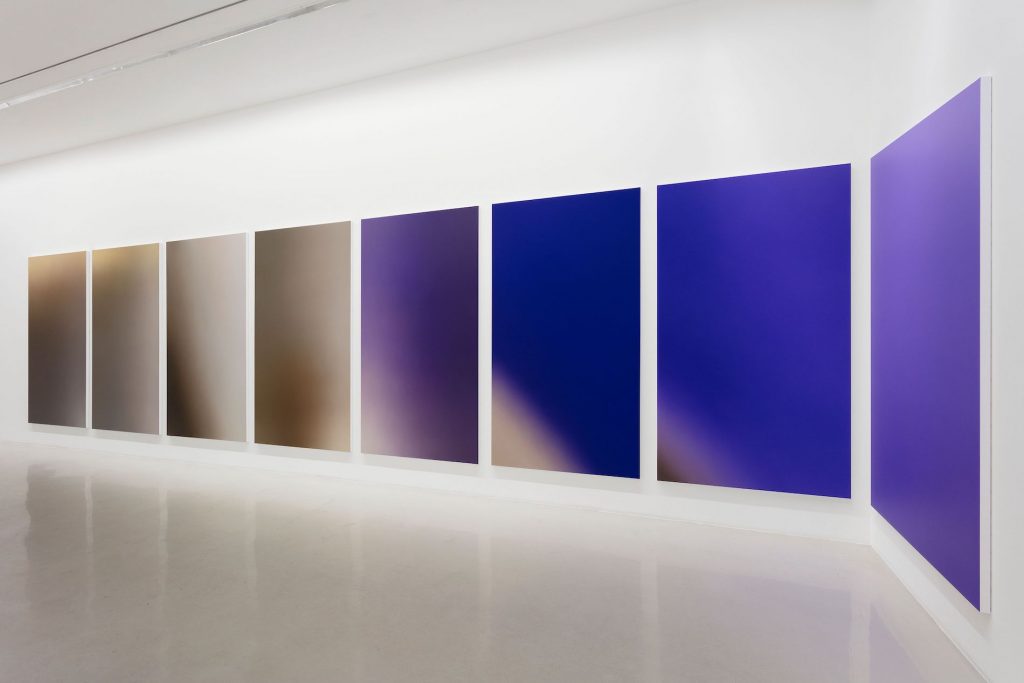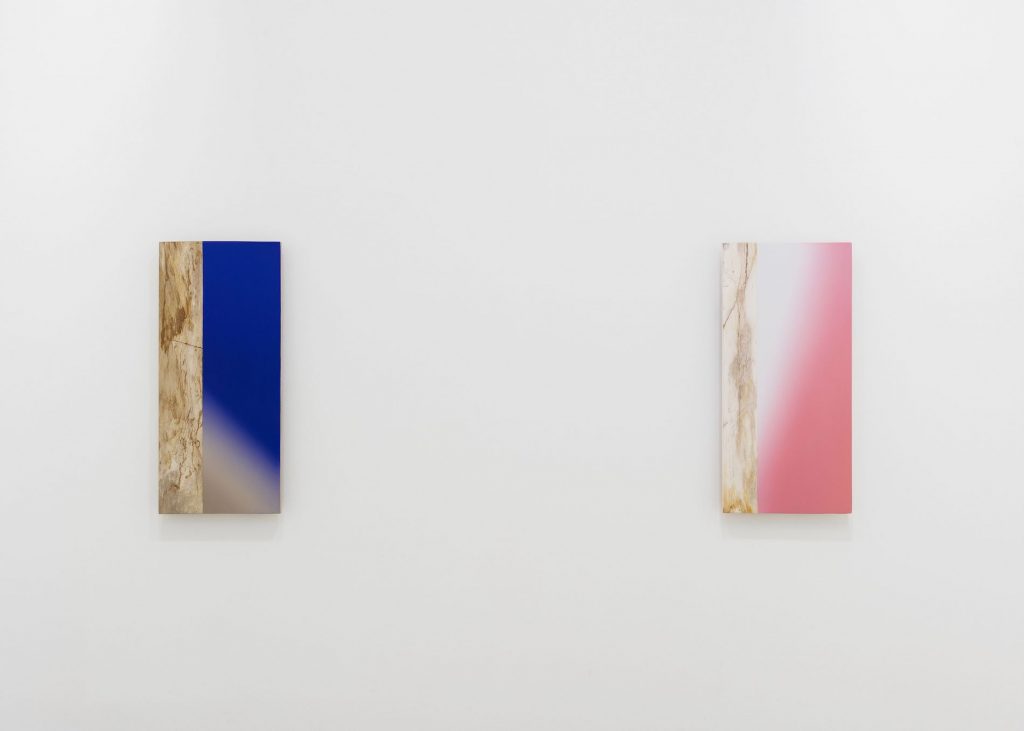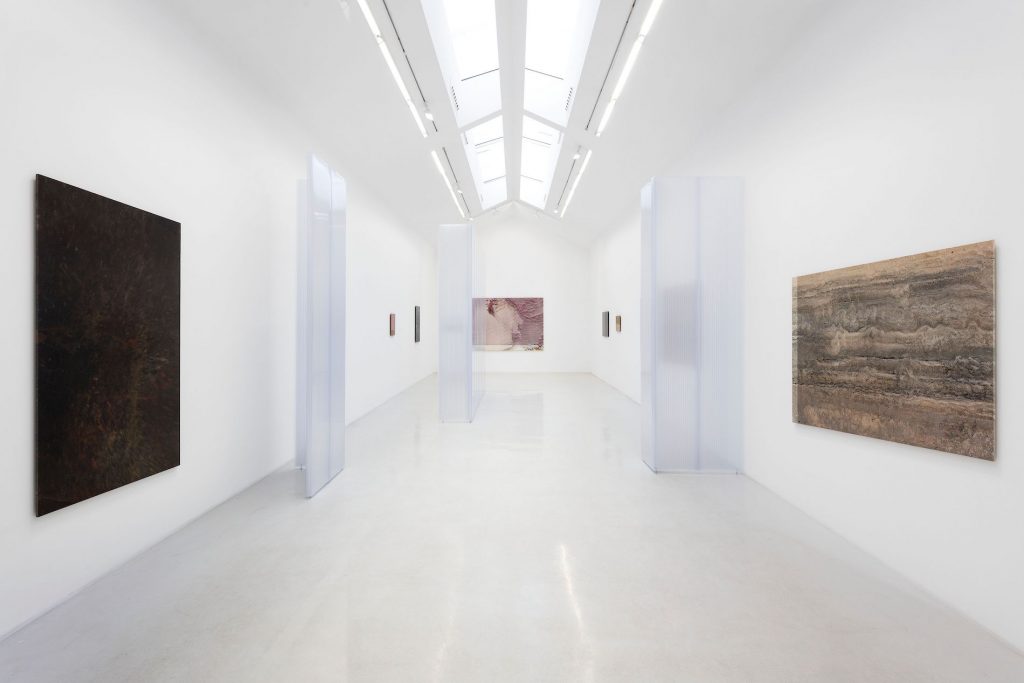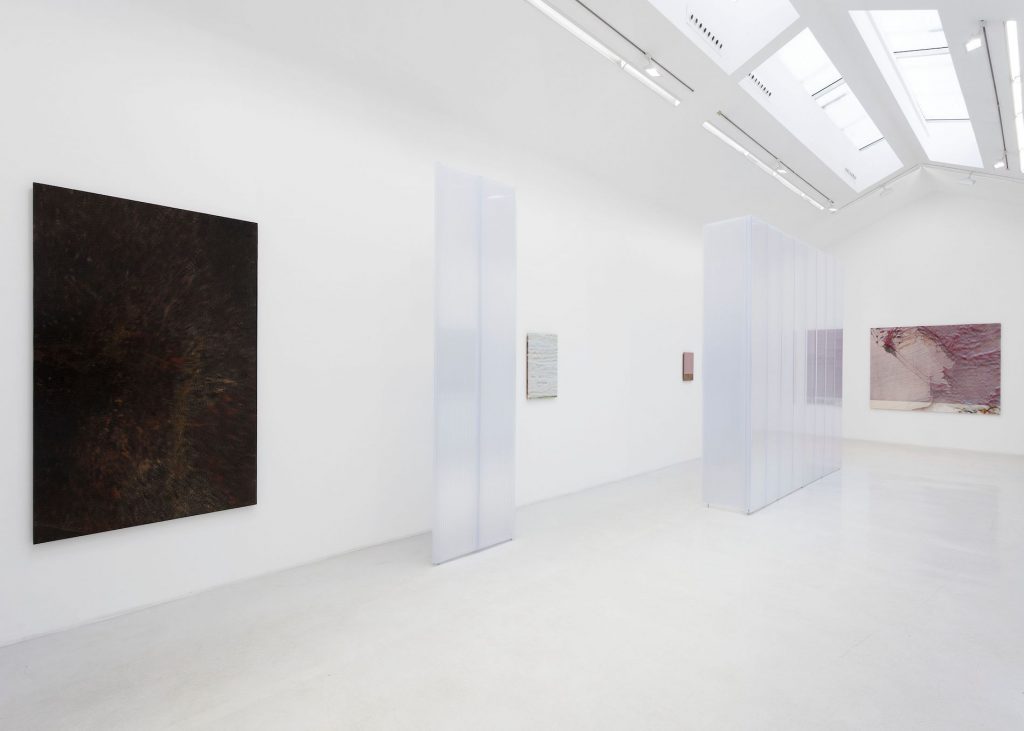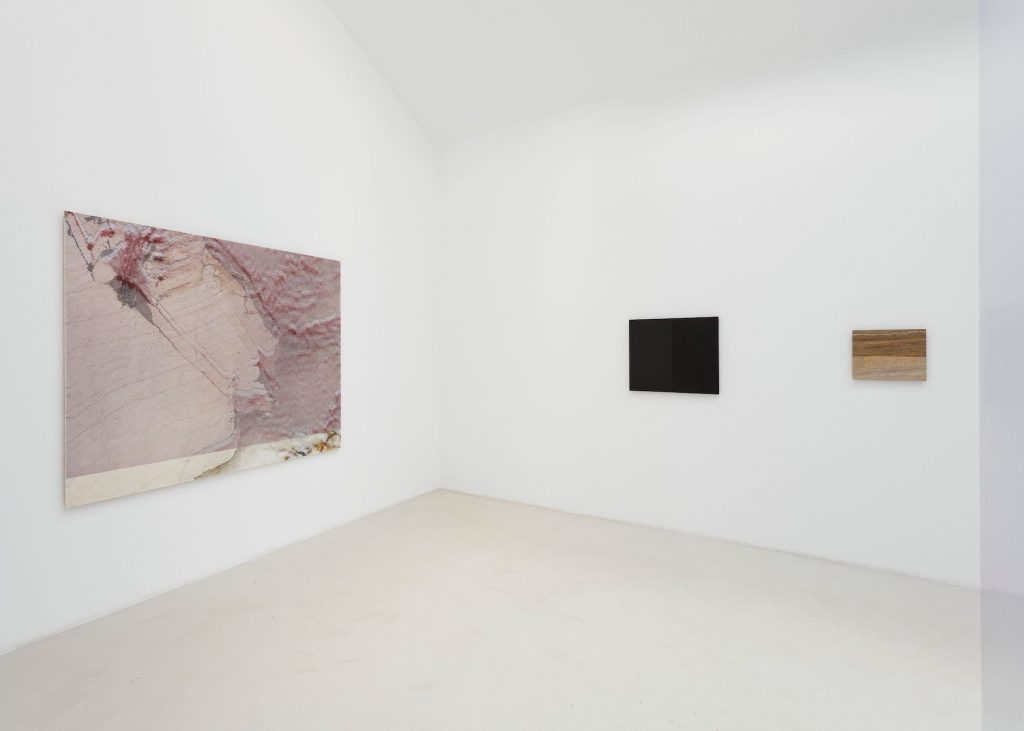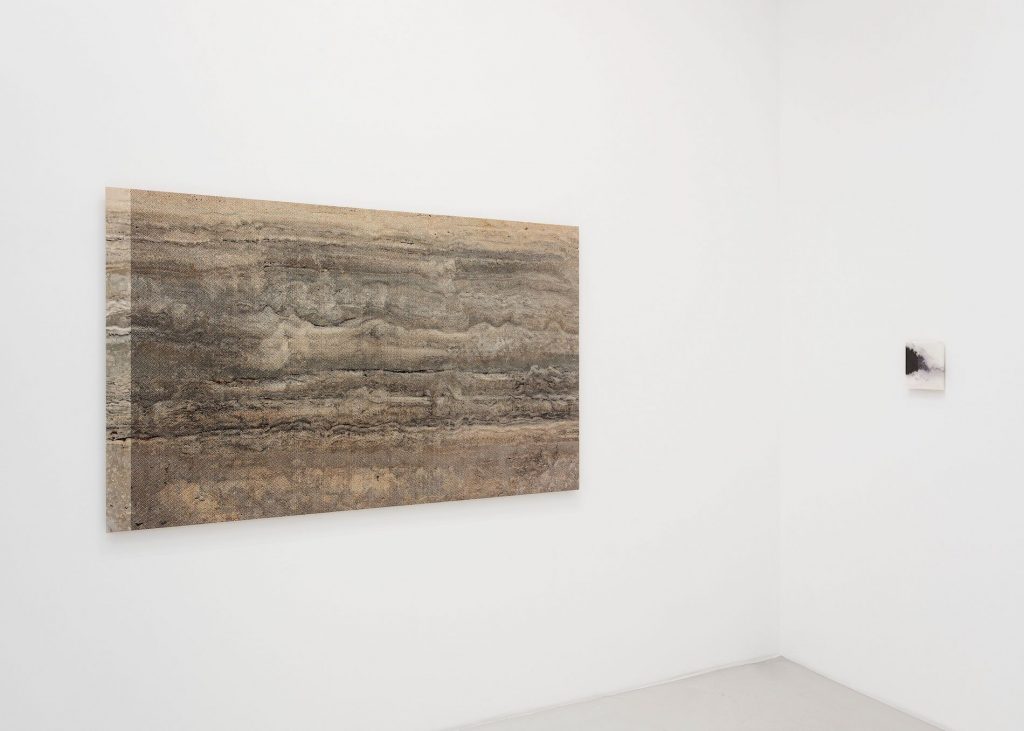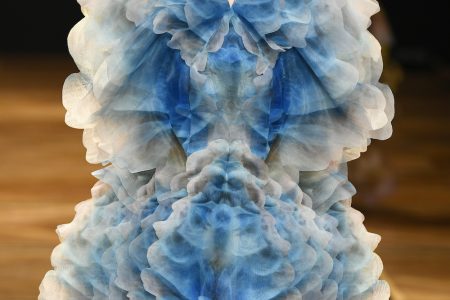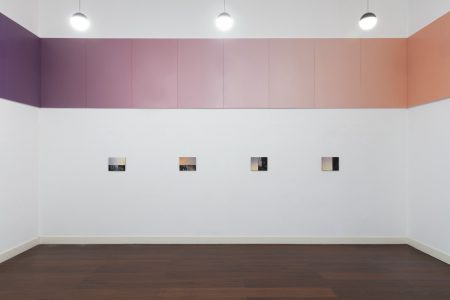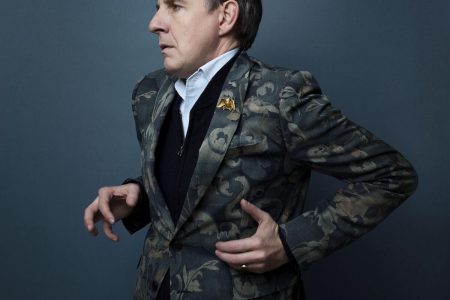Pieter Vermeersch: the Importance of Matter
TLmag sat down with the Belgian based artist to talk about his methods and work in his recent show exhibition for Perrotin Paris.
Recently artist Pieter Vermeersch has created an exhibition for Perrotin Paris – his sixth solo exhibition for this gallery, the third in Paris. His work is neither illustrative nor narrative: in short, art is its only crutch. With a process starting from materials – for example, images of marble are silkscreened onto the marble and the image is enlarged to such an extent that each grid dot shows the support around it – and from the virtues and personal stories that the artist projects onto them. TLmag sat down with the Belgian artist based in Turin to talk about his methods and work.
TL: What is your choice of material of the works in the show, and how does this choice play into the previously described narrative of the exhibition?
Pieter Vermeesch (P.V.): There is a strong presence of marble stone and petrified wood in the show besides a series of canvases, a room divider, and architectural structures in translucent polycarbonate. I’d say the show presents media ranging from ‘low’ industrial material to precious materials.
I started thinking of the importance of matter in my practice around 2012. There was the need to bring the ephemeral aesthetics back to the awareness of the here and now. I started to scrape off some parts of the finished painting when it was still wet, bringing that spacious and undefined liquid image back to a physical trace of a moment. Paint became paint again as such, a matter which was representing something.
A few years later the element of marble stone attracted my attention, it had almost everything I was already working on and captured my fascinations in a way: it’s basically crystalized time and space showing its ungraspable history through human intervention. Lately, matter through stripped architectural structures is used in exhibitions to attempt to confront and contrast paintings, define or decompose space and make the audience look and move in a different way.
You can say that all of these perspectives are somehow present in the exhibition, except for the scratched paintings. In this show, a new approach is my aim to painting matter ‘away’ (oil on petrified wood) and dematerialize (silkscreen on marble slabs, architectural elements) instead of bringing the material up. It’s the opposite direction to, again, arrive in the in-between zone, the merging point, the kaleidoscopic middle, the utopia of the objective.
TLmag: Could you talk a bit more about the image of your paintings, for which you use silkscreen on marble, dematerializes matter? (exploring the relationship between space and time)
P.V.: Photography has always played a fundamental role in my practice and the medium made me understand and develop time/space relations. All my work is based on photographic images I take in search of a picture where the spatial reference is questioned. The outcome is a type of photograph of undefined space, a spatial abstraction.
After a process of analyzing and reflecting, it will be painted in a hyper-realistic way: a hyper-realistic abstraction, we might say. I’m attracted to these pictures because they are not ‘frozen’ in time. They are not bound to the moment, since the moment is gone. They become the whole dimension of time and I kind of hope painting these images release them even more.
In this show, the way I used photography for the silkscreen on marble works is different but related. We experience dematerialization through the representation of the marble itself. A picture of the specific marble slab is silkscreened on that same piece of marble. It creates a condition having two states of reality namely the experience of matter (abstraction) and the experience of its image (representation) melted into one. By shifting the image on the marble, it creates a visual echo and becomes a spatial activation of crystalized time in matter.
My interest in using silkscreen as a technique is at one hand the interest in superposing something industrial on natural material and at the other hand the fact I could enlarge the grid of the CMYK system to decompose the image itself when you get closer as a spectator. Getting close to the work reveals de large color components decomposing the image merging in its abstraction with the marble stone. It becomes all particles, quite cosmic.
TLmag: Your work is not only placed in gallery settings, could you talk a bit on your work in relation to OFFICE Kersten Geers David Van Severen? What is the work, and how is it defined by its context?
P.V.: My collaborations with OFFICE Kersten Geers David Van Severen have been a great experience. I have always been attracted to their sensitive, plastic framing of space. If you ask me, with their solo house in Spain they reached the ultimate result. This circular house is dropped in wild nature which makes it a total experience. In my work, space has an important role and is framed by the canvas or the architecture, so working with their frame was a beautiful starting point.
I was asked to do something with the technical elements on top of the circular roof. This was not a question about decorating but adding a visual element orientating the visual direction of the building from the outside. My work is driven by the idea that everything is context, even when we think matter is autonomous. The house in its complexity its idea its esthetic quality its surroundings, the geography, and all of the other elements are incorporated in my process to arrive at a decision of what can be done- or not.
Context is actually the door to enrich or trigger the general ideas you work with and again it opens them up, gives them oxygen. What I like about all these elements is the fact that they exist outside of me.
More concretely I painted two pictures on two circular technical containers on the roof. I really wanted to follow the picture around, following the circular movement of the building. I used a positive picture and its negative for this intervention to connect them, to make them communicate. I see it also as a contribution to the idea of the building as a machine.
The technical elements have been put visually on the roof as industrial sculptures. This gives them specific attention through a colorful intervention that underwrites and pushes the idea even further. Then you have the parallel between the dualities pos./neg. and matter/space through the blue and ochre color gradients.
This first collaboration has triggered MANIERA to invite us to do a project for their showroom in Brussels where we made a room divider, a lamp, a table, and a bench. We started from scratch with a solo house in our minds. You can find a lot of circles and some related materials and we started playing ping pong towards aesthetic symbioses.
Pieter Vermeersch’s solo exhibition at Galerie Perrotin (Paris, France) took place from October 17 until January 30th, 2021.
All photography credits, Claire Dorn.
